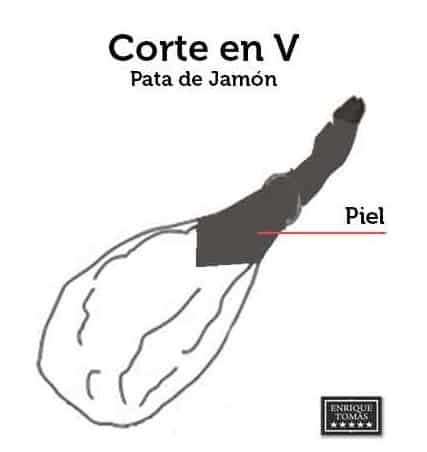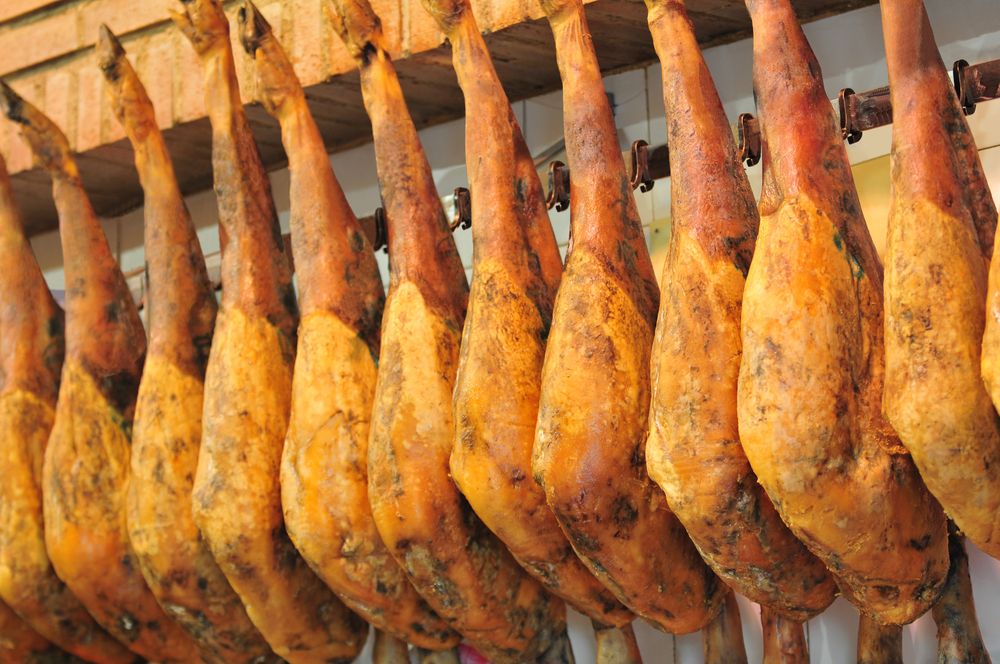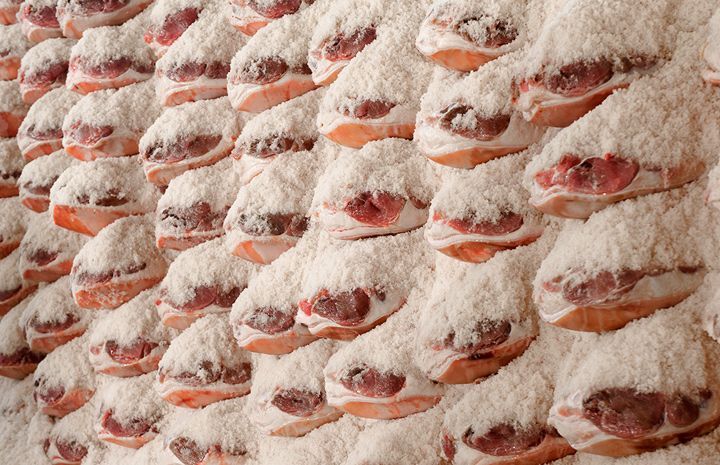
How do you salt Spanish hams?
Curing is the second stage of the ham production process and takes place after the legs have been washed. This phase involves burying the ham pieces in salt to partially dehydrate them, enhance their flavor, and prevent bacterial growth.
So, how are hams salted? How long does this stage last? If you want to know everything, pay attention, because at Enrique Tomás, we'll explain it in detail!
What the Salting Process Involves
As mentioned earlier, salting is the second stage of the curing process and is carried out after the pieces have been cleaned. However, the method varies in different regions of Spain.
Before starting the salting, a V-shaped cut is usually made on the ham piece to allow the salt to penetrate better. Each master ham maker has their own way of doing it, depending on the salt intensity they want for their hams and the curing time they desire for their pieces.

Illustration of a V-cut on a ham leg.

The "cooks," as we like to call our master artisans at Enrique Tomás, place the hams inside containers and bury them in salt. Depending on the amount of salt used and the time the hams are left buried, the pieces will have a different flavor.
Master artisans have all the information about each of the legs and know exactly what flavor they want to achieve. Time and the amount of salt are the two variables they play with to achieve the desired level of salting.
The Rest of the Process
Regarding the duration, it's worth noting that it depends on the pieces and the artisan's preference. The longer the pieces are buried, the saltier they will become. The average duration is one day per kilogram, which means if a piece weighs 14 kg, it will be buried for 14 days.
It's important to consider that the salting process is not just about putting the legs in containers and leaving them. Throughout these days, the Iberian ham is supervised by the master ham makers. Once this stage is completed, the hams are removed and washed with lukewarm water to remove the adhered salt. Only the salt that has penetrated the meat is desired.
Afterward, the hams undergo shaping, profiling, and refining because, when they were stacked on top of each other, they lost their original shape and need to be restored. Then comes the post-salting.

Hams in the Salting Phase
What Is Post-Salting?
This stage comes just before the next phase, drying. The goal at this point is to achieve even distribution of salt inside the pieces and it lasts for 40 to 60 days. The hams are hung at low temperatures, between 0 and 6 degrees Celsius, with 80-90% humidity.
During this time, the pieces lose moisture and acquire a firmer texture. Once this period is over, they can move on to the next stage: drying. Drying and maturation are the final phases of the curing process, and once completed, the pieces are ready for commercialization.
Now you know how hams are salted, and as you can see, at Enrique Tomás, we closely monitor them at all times. We ensure that all the pieces we sell meet the triple Q quality standard because we only want to offer you the best!
If you want to buy the highest quality ham, don't hesitate; the best curing is available at our stores!





